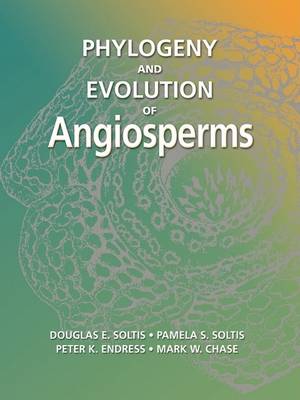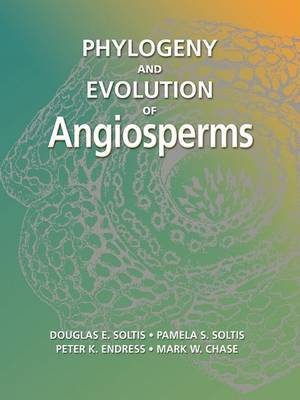
Door een staking bij bpost kan je online bestelling op dit moment iets langer onderweg zijn dan voorzien. Dringend iets nodig? Onze winkels ontvangen jou met open armen!
- Afhalen na 1 uur in een winkel met voorraad
- Gratis thuislevering in België vanaf € 30
- Ruim aanbod met 7 miljoen producten
Door een staking bij bpost kan je online bestelling op dit moment iets langer onderweg zijn dan voorzien. Dringend iets nodig? Onze winkels ontvangen jou met open armen!
- Afhalen na 1 uur in een winkel met voorraad
- Gratis thuislevering in België vanaf € 30
- Ruim aanbod met 7 miljoen producten
Zoeken
Phylogeny and Evolution of Angiosperms
Douglas E Soltis, Pamela E Soltis, Peter K Endress, Mark W Chase
Paperback | Engels
€ 113,45
+ 226 punten
Omschrijving
Our understanding of angiosperm relationships has changed dramatically during the past ten years. The big picture of angiosperm phylogeny emerged suddenly as a direct result of collaborative molecular analyses, and longstanding views of deep-level relationships required revision. Many major clades of angiosperms did not correspond to the classes, subclasses, and orders of modern classifications. Furthermore, a wealth of recent data coupled with current understanding of phylogeny permits reevaluation of many deep-rooted evolutionary hypotheses. Soltis et al. provide a comprehensive summary of current concepts of angiosperm phylogeny and illustrate the profound impact that this phylogenetic framework has had on concepts of character evolution. In so doing, they acknowledge inadequacies in both current understanding of phylogeny and knowledge of morphological characters, as well as the need for additional study.
Specificaties
Betrokkenen
- Auteur(s):
- Uitgeverij:
Inhoud
- Aantal bladzijden:
- 370
- Taal:
- Engels
Eigenschappen
- Productcode (EAN):
- 9780878938179
- Verschijningsdatum:
- 15/06/2005
- Uitvoering:
- Paperback
- Formaat:
- Trade paperback (VS)
- Afmetingen:
- 269 mm x 211 mm
- Gewicht:
- 1098 g

Alleen bij Standaard Boekhandel
+ 226 punten op je klantenkaart van Standaard Boekhandel
Beoordelingen
We publiceren alleen reviews die voldoen aan de voorwaarden voor reviews. Bekijk onze voorwaarden voor reviews.











